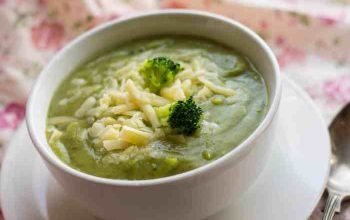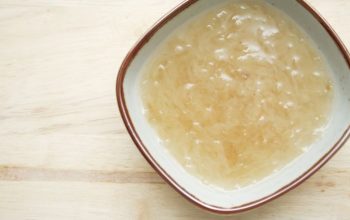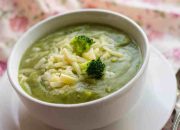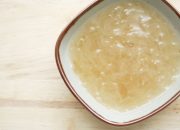Soup Udon Noodles: A Comprehensive Guide: Soup Udon Noodles Recipe
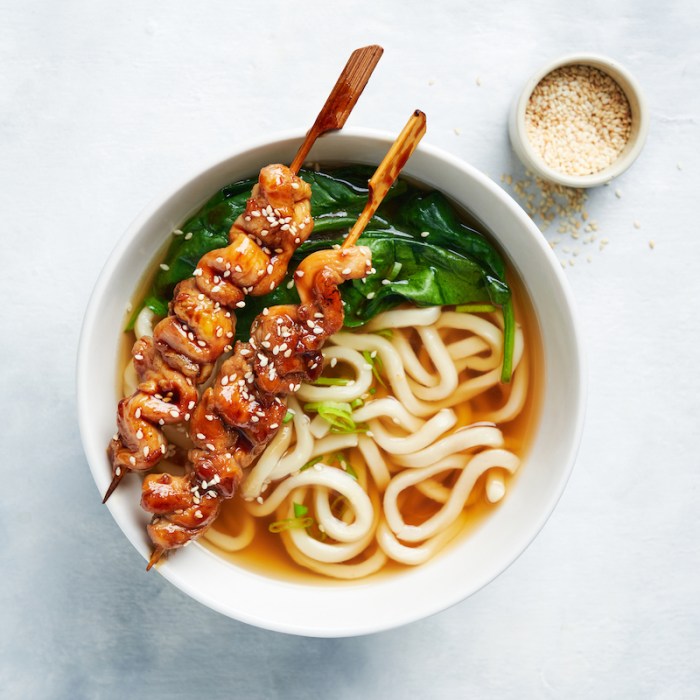
Source: marionskitchen.com
Soup udon noodles recipe – Udon, the hearty Japanese wheat noodle, forms the basis of a comforting and versatile soup. This guide delves into the history, preparation, and customization of this beloved dish, offering both basic and advanced techniques to elevate your udon experience.
Introduction to Soup Udon Noodles
Udon noodles boast a rich history, originating in Japan centuries ago. Their thick, chewy texture sets them apart from other noodle types like soba (buckwheat) or ramen (wheat). Thickness varies significantly, ranging from thin (hosoudon) to extra-thick (futsuudon), influencing the noodle’s overall mouthfeel and cooking time. Udon’s distinct character lies in its substantial texture and ability to absorb flavorful broths.
Basic Soup Udon Recipe
This recipe provides a foundational understanding of preparing soup udon. It emphasizes simplicity and allows for creative customization.
Ingredients: 200g udon noodles, 4 cups dashi broth (recipe below), 100g firm tofu (cubed), 1/2 cup sliced shiitake mushrooms, 1 green onion (sliced), 1 egg (optional).
Instructions:
- Prepare the dashi broth (see below).
- Cook udon noodles according to package directions. Rinse with cold water to prevent sticking.
- In a pot, heat the dashi broth. Add tofu and mushrooms; simmer for 5 minutes.
- Add cooked udon noodles to the broth. Gently stir to combine.
- Serve hot, garnished with green onions and a soft-boiled egg (optional).
Dashi Broth Preparation: Combine 4 cups water, 4g kombu kelp (soaked for 30 minutes), and 8g bonito flakes. Bring to a simmer, remove from heat, and strain.
Tips for Perfect Udon: Don’t overcook the noodles; aim for a slightly firm texture. Rinsing with cold water prevents sticking and maintains a pleasant chewiness.
Broth Variations for Soup Udon
The broth is the heart of soup udon. Three distinct variations are explored below, each offering a unique flavor profile.
- Classic Dashi Broth: This foundational broth utilizes kombu kelp and bonito flakes for a savory, umami-rich taste. Its clean flavor allows the other ingredients to shine.
- Miso-Based Broth: Adding miso paste to the dashi broth introduces a fermented, slightly sweet and salty depth. White or red miso can be used, altering the intensity of the flavor.
- Spicy Broth: Incorporating chili oil, gochujang (Korean chili paste), or other chili-based ingredients creates a warm, spicy kick. This variation balances heat with the savory umami of the dashi.
Toppings and Garnishes for Soup Udon, Soup udon noodles recipe
A wide array of toppings enhances the soup udon experience. These can be categorized by type to aid in customization.
| Topping | Broth Type | Flavor Profile | Preparation Notes |
|---|---|---|---|
| Tempura Shrimp | Dashi, Spicy | Savory, Crispy | Fry until golden brown. |
| Kamaboko (Fish Cake) | Dashi, Miso | Slightly sweet, savory | Slice thinly. |
| Spinach | All | Fresh, slightly bitter | Blanch briefly. |
| Mushrooms (Shiitake, Enoki) | All | Earthy, savory | Sauté or add directly to broth. |
Advanced Techniques for Soup Udon

Source: connoisseurusveg.com
These techniques elevate the soup udon from a simple meal to a culinary experience.
- Richer Broth: Simmering the broth longer, adding roasted vegetables or mushrooms, or using higher-quality ingredients intensifies the flavor.
- Visual Appeal: Arrange toppings artfully in the bowl, considering color and texture contrast. A sprinkle of finely chopped scallions adds a touch of elegance.
- Storage and Reheating: Store leftovers in an airtight container in the refrigerator. Reheat gently on the stovetop or in the microwave, avoiding overcooking.
Dietary Adaptations for Soup Udon
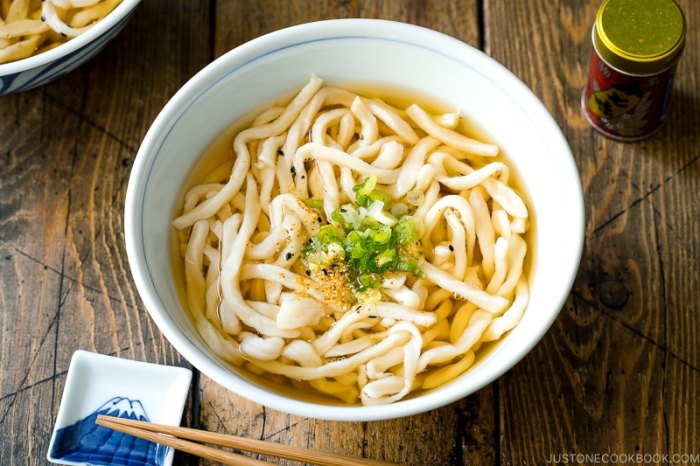
Source: justonecookbook.com
Soup udon can be adapted to accommodate various dietary needs.
- Vegetarian: Omit any meat-based toppings and ensure the dashi is vegetarian-friendly (kombu only or vegetable-based broth).
- Vegan: Use a vegan dashi alternative (e.g., mushroom-based) and avoid any non-vegan ingredients like eggs or fish cakes.
- Gluten-Free: Substitute gluten-free noodles for the udon. Many brands offer gluten-free udon alternatives.
Visual Guide to Soup Udon Preparation
Visual cues throughout the cooking process indicate proper preparation.
Raw udon noodles are pale and firm. Partially cooked noodles are slightly softened but still retain some firmness. Fully cooked noodles are soft and pliable but not mushy. A well-prepared broth is clear, with a light golden color and a pleasant aroma. The ideal presentation features an aesthetically pleasing arrangement of toppings, creating visual harmony within the bowl.
FAQ Insights
Can I use frozen udon noodles?
Yes, frozen udon noodles work well. Simply follow package instructions for thawing and cooking, ensuring they don’t become overcooked and mushy.
How long does leftover udon soup last?
Craving a comforting bowl of soup udon noodles? Before you dive in, consider a cleanse! Kickstart your healthy eating with the seven day cabbage soup diet recipe , then reward yourself with a lighter, flavorful bowl of your favorite udon – you’ll appreciate the taste even more after a reset!
Store leftover udon soup in an airtight container in the refrigerator for up to 3 days. Reheat gently on the stovetop or in the microwave.
What if I don’t have all the ingredients for a specific broth?
Feel free to adapt! Substitute ingredients based on your preference and availability. The beauty of udon is its adaptability.
Can I make the broth ahead of time?
Yes! Broths often taste even better the next day. Make it ahead and store it in the refrigerator until ready to use.




